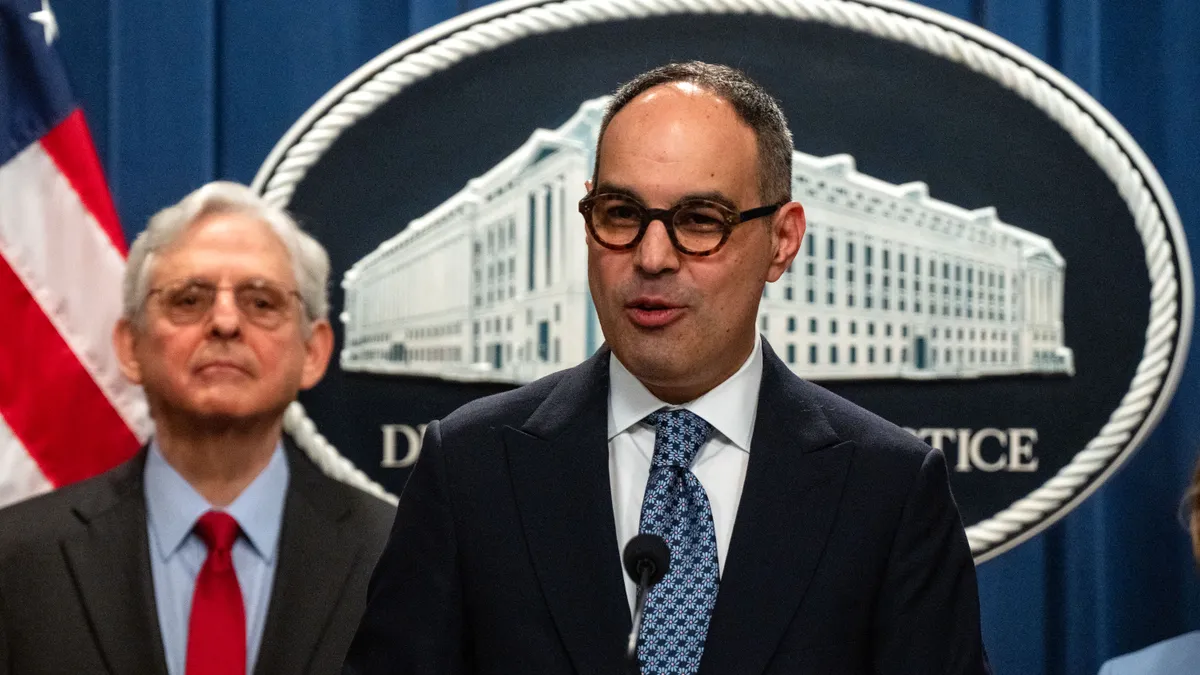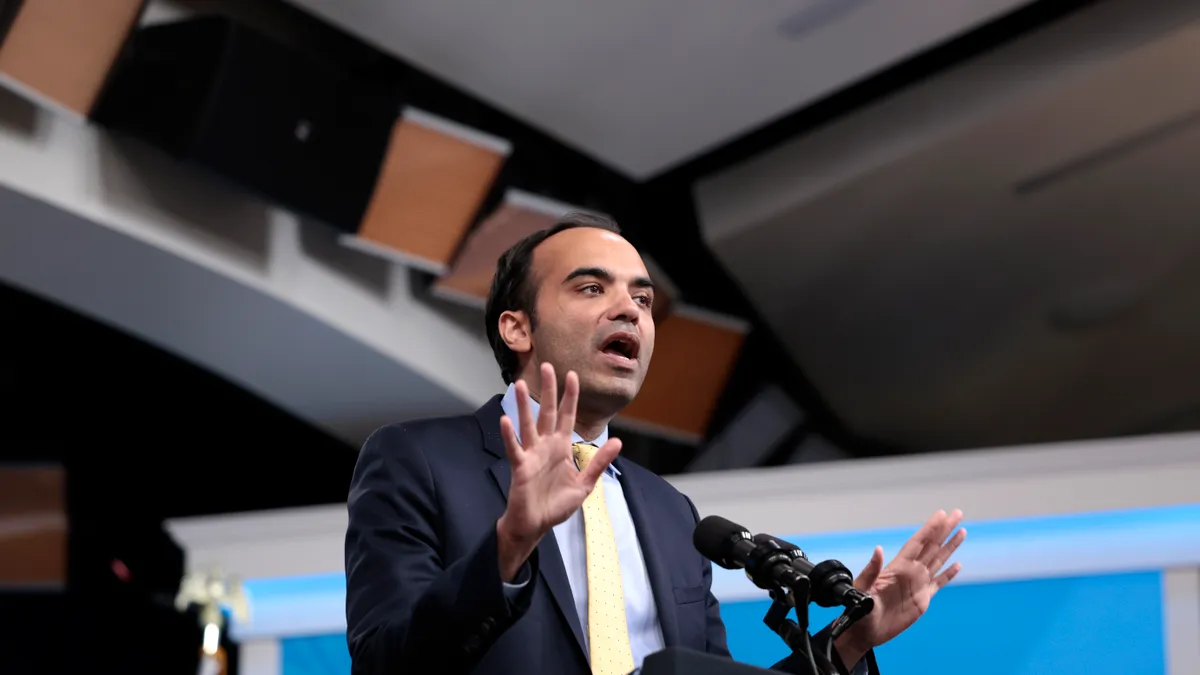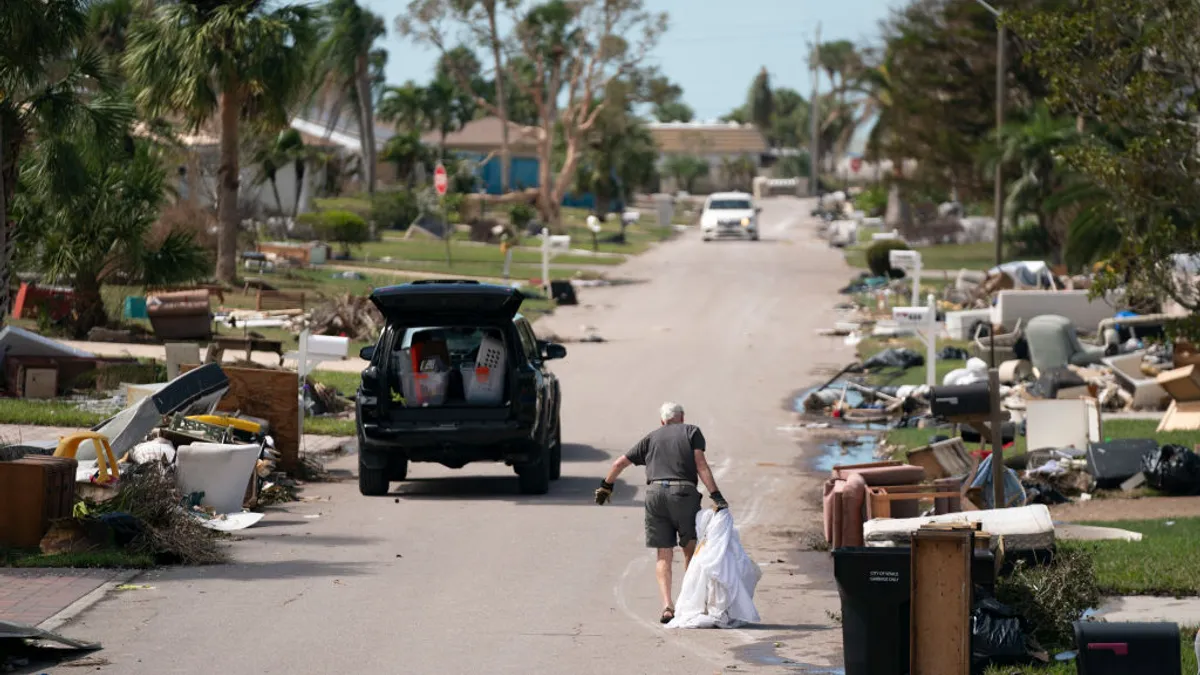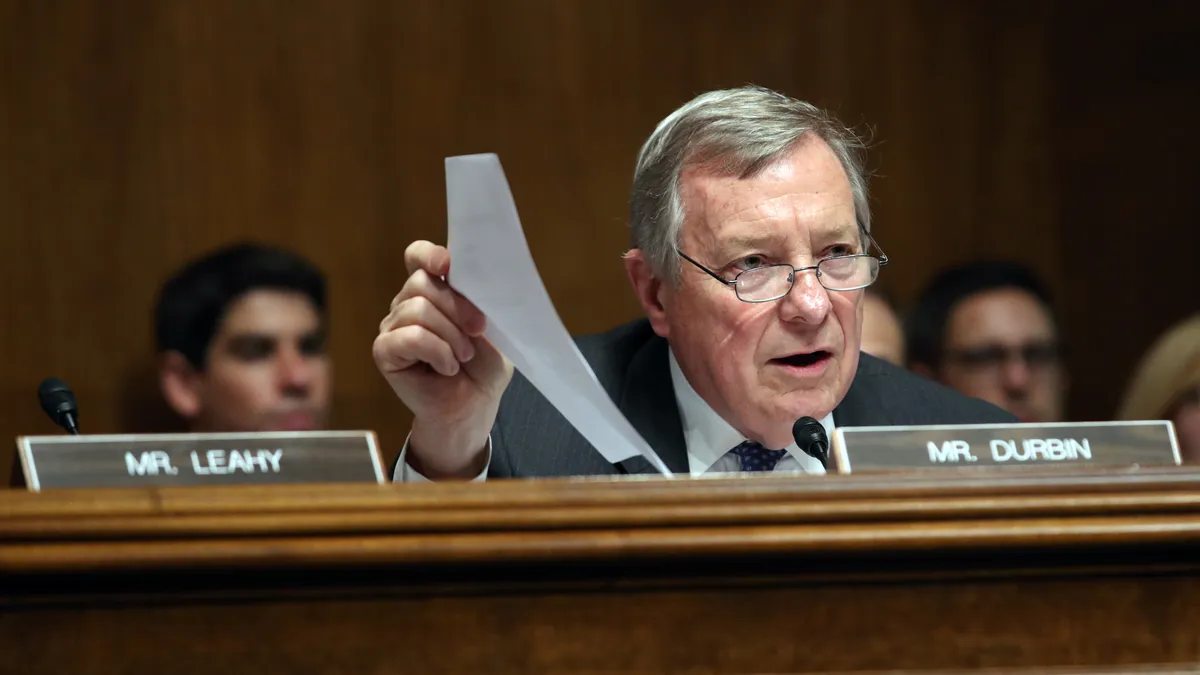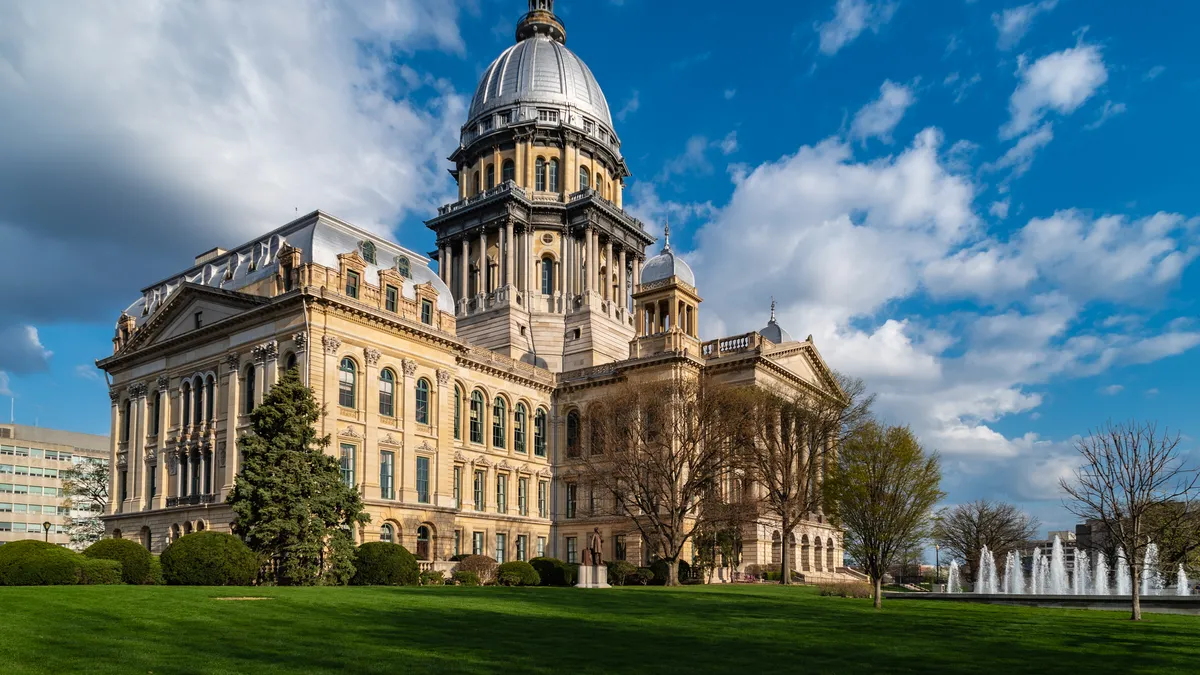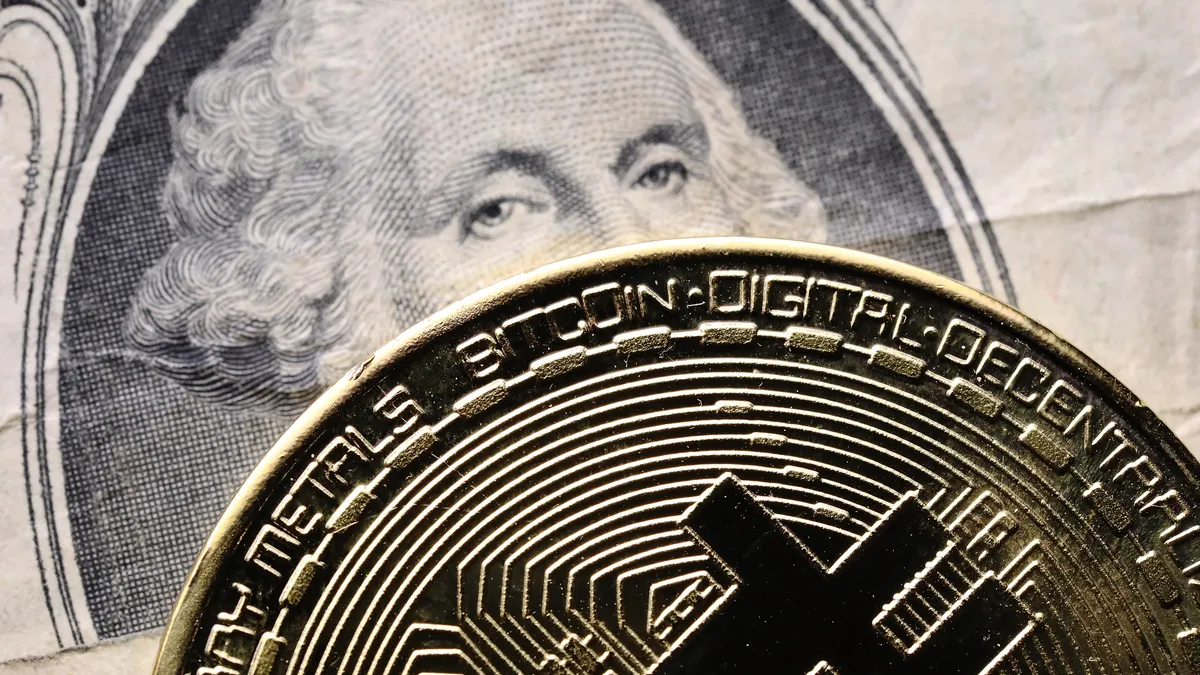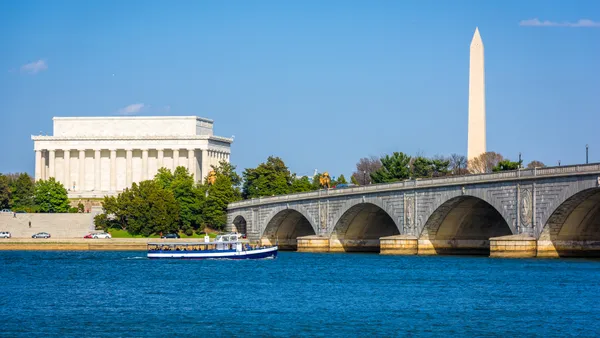The Federal Reserve’s vice chair for supervision, Michael Barr, may have meant for balance to be a key theme in his speech Wednesday at DC Fintech Week.
“Striking the right balance between creating an enabling environment that supports innovation and managing related risks to businesses, households and the stability of the financial system is no easy task,” he said. “Everyone has a stake in getting the regulatory balance right.”
Barr closed the speech emphasizing the “need to get the guardrails right.”
But the undercurrent in his appearance may well have been interconnectedness — not just in reference to the effect technologies such as digital assets could have on the financial system, but for the number of times Barr made clear the Fed doesn’t regulate in a bubble.
He took care to note that the central bank is working in tandem with the Office of the Comptroller of the Currency (OCC) and Federal Deposit Insurance Corp. (FDIC) to develop crypto regulation.
He made two call-outs to Congress: one, urging lawmakers to create a strong framework for the oversight of stablecoins, and another to reiterate that the Fed would be loath to create a central bank digital currency (CBDC) without lawmakers’ backing.
And Barr expressed enthusiasm for strides the Consumer Financial Protection Bureau (CFPB) could make with regard to users’ control over their own personal information.
Several of the talking points may generate a sense of deja vu. “We continue to work on [the concept of regulating crypto] from the overriding principle that the same type of activity should be regulated in the same way,” Barr said, reiterating a stance he took in his first public comments since joining the Fed board — which, in turn, mirror Fed Chair Jerome Powell’s philosophy on a CBDC.
Even if some of the words ring familiar, several of Barr’s comments stood out as potential guideposts for future reference:
1. On crypto.
Key quote: “Because crypto assets have proved to be so volatile, they are unlikely to grow into money substitutes and become a viable means to pay for transactions.”
This clearly shows the Fed’s limited expectations for the asset class. Perhaps more nuanced is Barr’s reassurance that the Fed, OCC and FDIC’s teamwork on crypto regulation is “not intended to discourage banks from providing access to banking products and services to businesses associated with crypto assets.”
“It is important for banks to understand some of the heightened liquidity risks they may face from certain types of deposits from crypto asset companies,” Barr cautioned, adding the interconnectedness in the crypto market may contribute to “amplified stress.”
The comments, coincidentally or not, came a day after BNY Mellon began receiving clients’ cryptocurrencies to hold or transfer.
“When a bank's deposits are concentrated in deposits from the crypto asset industry or from crypto asset companies that are highly interconnected or share similar risk profiles, banks may experience deposit fluctuations that are correlated and closely linked to broader developments in crypto asset markets,” Barr said.
In a later reference to dollar-denominated tokens sent along a distributed ledger, Barr said, “Banks looking to experiment with these new technologies should do so only in a controlled and limited manner.”
2. On stablecoins.
Key quote: “As Chair Powell said the other day, a central bank is and will always be the main source of trust behind money. Stablecoins borrow that trust, so we have an abiding interest in a strong federal prudential framework for their use.”
Stablecoins, Barr said, “have greater capacity to function as privately issued money” than crypto assets do. But they still “are subject to runs that can threaten financial stability.
“It is important to get the regulatory framework right before they do,” Barr said.
3. On a potential CBDC.
Key quote: “The Federal Reserve has not made any decisions about whether to issue a CBDC.”
This clarification has surfaced in probably every public discussion about a digital dollar. Barr did provide two status updates, though.
First, that the central bank is “in the final stages of creating the FedNow service,” which is scheduled to launch between May and July of next year.
Second, the Fed is “doing the work of understanding the technological requirements” of creating a CBDC, Barr said. The central bank is also “deepening our understanding of potential policy trade-offs, and taking a look at how other countries are thinking about and experimenting with CBDCs.”
4. The timing of regulation.
Key quote: “When regulations are too prescriptive or regulators too cautious, they run the risk of stifling innovation and locking in the market power of dominant participants in ways that can raise costs and limit access. When regulation is lax or behind the curve, it can facilitate risk-taking and a race to the bottom that puts consumers, businesses and the economy in danger and discredits new products and services with consumers and investors.”
This sentiment may be a handy reference when regulators urge expediency in getting crypto rules on the books. But it may also underline the cautious pace with which the Fed has taken its CBDC effort. Some lawmakers have pressed for a shorter timeline for fear the dollar would lose its primacy among world currencies.








